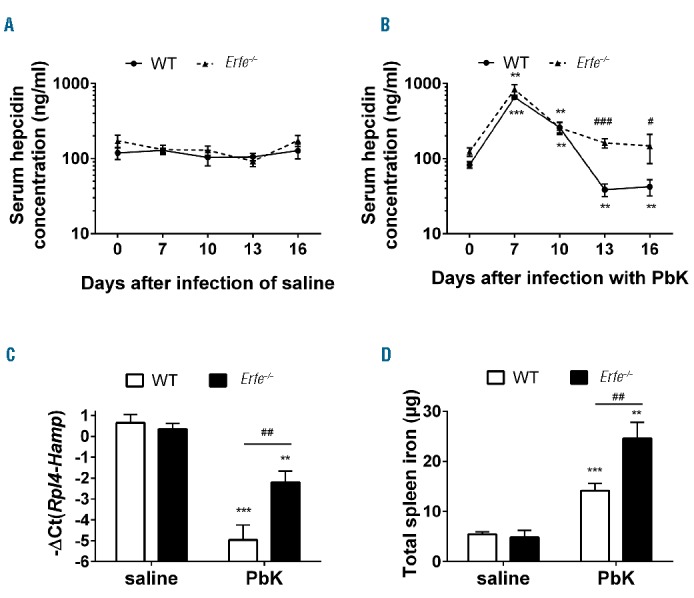Figure 6.

Ablation of Erfe leads to impaired regulation of hepcidin and iron retention in the stores during infection with Plasmodium berghei K173. Repetitive blood collection did not influence serum hepcidin concentration in saline controls (A). Serum hepcidin levels (B) were significantly decreased below baseline at days 13 and 16 after infection in WT mice (solid line, dotted symbols) but not in Erfe-deficient mice (dashed line, triangle symbols). At day 16 after infection with PbK, Hamp mRNA expression (C) was suppressed in WT but not in Erfe−/− mice. As a result, Erfe−/− mice had higher spleen iron content than WT mice (D). (A, B) The same mice were monitored between day 0 and 16 (n=6 mice per genotype for PbK-treated mice and 4 mice per genotype for saline controls). Data shown are mean ± sem and were compared for each mice at each time point to values at t=0 (***P<0.001, **P<0.01) and between WT and Erfe−/− mice (###P<0.001, ##P<0.01, #P<0.05) by two-tailed Student’s t-test (n=6 mice per group). (C-D) Data shown are mean ± sem and were compared for each genotype between mice injected with saline and PbK (***P<0.001, **P<0.01) and between WT and Erfe−/− mice (##P<0.01, #P<0.05) at day 16 by two-tailed Student’s t-test. WT: wild-type; PbK: Plasmodium berghei K173.
